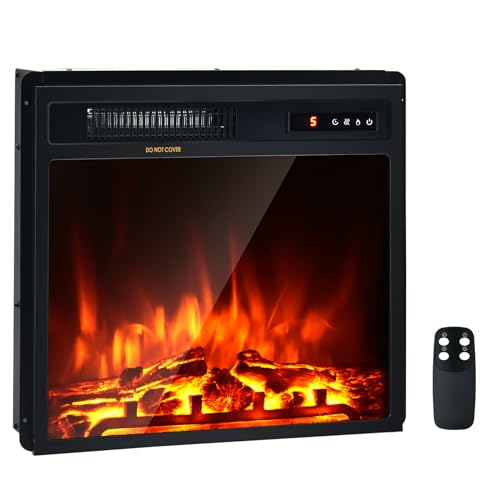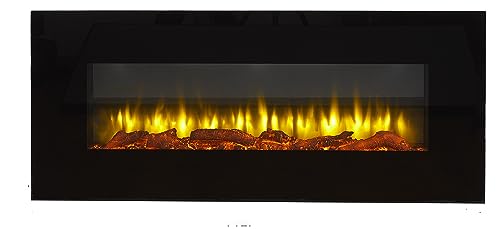Five Killer Quora Answers On Wood Burning Fires
페이지 정보
작성자 Alfred Whitelaw 작성일25-01-08 18:09 조회2회 댓글0건관련링크
본문
 Wood Burning Fires Need to Be Hot and Clean
Wood Burning Fires Need to Be Hot and CleanWood burning fires are not only relaxing and captivating They're also an essential element of our health and wellbeing. They should be hot and clean in order to be effective.
Green, or unseasoned wood has high moisture content which makes it difficult to burn and light efficiently. Kiln dried or seasoned wood has a low moisture content, making it much easier to light and maintain a flame.
Efficient Combustion
The fire in the wood must be hot enough to burn off moisture and reach temperatures of over 540 degrees F. The process of producing heat in secondary combustion starts at 900 degrees F (in ideal conditions). This is the most important step in efficiently burning the fuel and reducing pollutants smoke, creosote, and buildup in the flue.
It is important to know that the temperature required for secondary combustion depends on the type of fuel used and the conditions around it. The best way to minimize the variations is to use well-seasoned firewood that has less than 20 percent.
The amount of air delivered to a fire can also have a significant impact on the temperature and burning time. The greater the oxygen supply, the hotter a fire will burn and the shorter its burn duration. A wood fire will produce less energy and burn slower when the air supply is restricted.
A fireplace or wood stove insert fitted with an adjustable air damper can increase the burn time and efficiency. Wide open settings allow the fire to burn through all of its available oxygen and will quickly use up the fuel that is usable. A fire that is contained within the confines of a small area is less likely to spread.
A well-dried firewood load is also essential for efficient wood burning. When wood is freshly cut and hasn't had a chance to dry, it will have high levels of water, which may make it difficult for logs to burn. It is recommended to use only wood that is seasoned and has been stored outdoors for between six and nine months to ensure optimal performance.
Another consideration is the BTU content of different kinds of wood. For instance white pine or spruce wood may be less expensive than eastern hardwoods such as black locust and shagbark hickory, but the BTU values of the latter are more, meaning they provide more heat for the same amount of wood. This is why it's important to think about your heating needs and fuel costs when selecting your firewood.
Clean Burning
Wood smoke creates indoor wood burning stove air pollutants that irritate the lungs and can cause respiratory distress, particularly for older adults and children. These pollutants include volatile aromatic hydrocarbons (PAHs) like benzo-a pyrene and formaldehyde and volatile organic compounds, such as benzene. Volatile Tars (such as creosote) are also released when firewood is burned.
Smoke from poorly designed wood fireplaces and stoves can cause poor air quality outside by reducing visibility and contributing photochemical pollution. However, new, clean burning fireplaces and wood stoves that incorporate modern combustion technology when used correctly can drastically reduce these emissions.
 Stage 1 - The vaporization of moisture: As the wood warms it releases water vapour, which escapes through the chimney flue. This is more energy-intensive than when the log was dried before burning. This also wastes energy that could be put to use to heat your home.
Stage 1 - The vaporization of moisture: As the wood warms it releases water vapour, which escapes through the chimney flue. This is more energy-intensive than when the log was dried before burning. This also wastes energy that could be put to use to heat your home.In the flue, these vapors combine with carbon particles to create smoke. Smoke is one of the major contributors to particulate matter in the air and is one of the major sources of smog we encounter on clear days.
When used correctly wood burning stove for shed stoves and fireplaces that use clean burn technology can help reduce the risk of this issue by converting the logs to a charcoal-like state that releases less volatile gasses and produces most of the energy from the log into usable heat.
Avoid using damp or sour wood to fuel your fire - it's more difficult to burn and produces much more creosote than well-seasoned wood. Do not overload your stove with soft and thin woods like pine or fir. They require more energy to burn and produce more smoke, which can cause chimney fires.
Use a bucket made of steel to remove ashes from the stove, and always wait for them to cool before handling them. Be sure to store or dispose of them properly - ashes can reignite when exposed to water, and they can be hazardous in landfills. Instead, make sure to make use of them in your garden or around the house.
Storing, seasoning and properly burning your wood will help you save money and keep your stove running efficiently. Cleaning your chimney on a regular basis is important to remove creosote and particulates as well as other debris that is deposited. This can also help prevent chimney fires as well as ensure safe operation.
Safety
There's nothing like a cozy fire to while away chilly winter nights, but the right safety precautions are necessary. If fires are not constructed correctly and left unattended or burnt, dangerous fumes can enter the home. Creosote may also build up in the chimney. These deposits can block the chimney and restrict the flow of air, making your wood stove or furnace to not work as efficiently.
Never burn painted or treated wood, household waste, rags, paper and other combustible materials in your wood-burning stove or fireplace. They emit toxic fumes, such as carbon dioxide and create toxic gasses. Don't use explosive liquids to ignite fires. Kerosene, gasoline and lighter fluids can increase emissions, create toxic creosote and possibly cause chimney fires.
Keep combustibles such as furniture, curtains and toys, in a safe distance from your stove or fireplace. Don't hang clothing close to or on the fireplace that is burning wood. Children should be taught that the fireplace is extremely hot and shouldn't be touched.
Use only seasoned contemporary wood burning stoves for your stove or fireplace. The wood that has been seasoned has been dried out over the summer months to decrease moisture. Woods that are damp emit more smoke and creosote. On the other hand, the wood that has been seasoned is more efficient and clean. The wood that is seasoned appears darker and has cracks in the end grain and is hollow when tapping. Keep your logs outside, neatly stacked with the top covered but permitting air circulation around them.
Be careful not to overload your stove or fireplace as appliances that are overloaded produce more smoke and produce less heat. Fires that are overloaded can also produce unsafe carbon monoxide levels. If you have an older appliance with an insulated metal liner, check the liner regularly for signs of wear and tear that could cause an explosion in the chimney.
The EPA suggests reducing the amount of smoke in your home by using dry, split and well-seasoned wood and constructing a hot fire with small pieces. Avoid using soft woods, like pine, which are a great for starting your fire going however shouldn't be used for anything other than. These woods with resin and sap that is a result of burning, and deposits excessive creosote into the chimney.
Maintenance
A warm fire in a wood-burning fireplace is a great way to enjoy the cold winter nights. It is crucial to keep your fireplace in good condition to get the most out of it. Regularly cleaning and inspecting your fireplace is the Best wood burning stoves method to avoid problems that may develop. This maintenance prevents excessive creosote and keeps the chimney clear for maximum efficiency.
If wood doesn't completely burn and creosote builds up in the chimney. If a substantial amount of creosote is accumulated, it can trigger chimney fires, which are the second most common cause of house fires in the United States. There are a variety of factors that can contribute to a fire's failure to completely burn, including dampers that are not properly sealed and cracks in the chimney liner and a lack of regular cleaning and the removal of ash.
Incorrectly seasoned wood contributes to an excessive buildup of creosote. Water can comprise half of the weight of a wood piece. In the course of a fire the water boils and releases heat, but it also consumes energy in the process. The water vapor that results is then condensed as creosote, or released into the air as part of the smoke.
Soot is a different harmful byproduct of burning wood. Soot, although less dense than creosote, is able to block airflow and stick to the walls. It is also an ignition risk since it ignites easily when exposed to combustible gases.
Remove the ashes from your fireplace and place them in an ash bucket made of metal. Keep it outside on an unflammable surface. Don't forget that ashes are a great source of nutrients for your plants. Spread them around in your yard!
Regularly have your fireplace and chimney examined by a Regency Dealer Certified. The technician will be able to check for cracks in the chimney, soot and creosote levels, a properly sealed damper and also the condition of your catalyst. If you have a double-stage fireplace with an air tube, you must remove the catalyst and inspected visually for any blockages. Check your user manual for instructions on how to accomplish this for the particular unit you have.
댓글목록
등록된 댓글이 없습니다.
